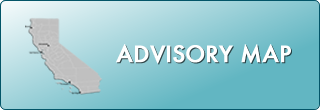OEHHA Releases Updated Fish Advisories and Safe Eating Guidelines for California Sport Fish
FOR IMMEDIATE RELEASE
CONTACT: SAM DELSON
(916) 324-0955 (office)
(916) 764-0955 (mobile)
SACRAMENTO – The California Office of Environmental Health Hazard Assessment (OEHHA) has released updated fish advisories and safe eating guidelines for fish from dozens of California rivers, lakes and other water bodies.
The updated guidelines provide information to help consumers avoid health risks and choose the safest fish to eat.
“These guidelines are valuable tools for consumers,” said OEHHA Director Dr. Joan Denton. “We want to discourage people from eating fish that pose unnecessary health risks because of chemical contamination and we want to encourage them to eat the safest types of fish because of their health benefits.”
A new OEHHA report contains updated advisories covering water bodies from all regions of the state. They range from Trinity Lake in the north to the Salton Sea in Imperial and Riverside counties. The report also describes OEHHA’s process for updating the fish advisories.
Fish are good sources of protein and heart-healthy nutrients. OEHHA recommends eating fish species that have high levels of omega-3 fatty acids that can provide health benefits. However, risks from contaminants must be balanced against these health benefits. The report encourages consumers to eat fish with the lowest levels of contaminants. Many of the guidelines reflect new data from fish tissue samples.
Almost all fish contain some mercury. Most of the mercury in fish is in the form of methylmercury. High exposures to methylmercury can affect learning ability, language skills, or memory in children while their nervous systems develop. The advisories also consider other contaminants, such as PCBs.
In a 2008 report, OEHHA identified levels of exposure to common fish contaminants that do not pose health risks. To issue fish advisories or safe eating guidelines, OEHHA compares measured contaminant levels in various fish to these chemical-exposure levels to determine how much fish can be safely eaten.
The updated guidelines discourage eating fish that either have very high levels of mercury or have too much mercury to eat them often enough to get health benefits. They encourage eating fish with levels low enough to safely eat them every week. OEHHA worked with the California Department of Public Health to simplify its advisories and improve their design.
Different recommendations are provided for children and women of childbearing age than for the rest of the population. Recommendations are divided into three levels of safety. The green group includes fish with low levels of mercury and other chemicals. They are safe to eat often. Fish in the yellow group have medium mercury levels. They can be eaten once a week by women of childbearing age and children, and more often by the rest of the population. Fish with high mercury levels that should be avoided by children and women ages 18-45 years are labeled as red. In most cases, the rest of the population can eat these fish once a week.
The recommended serving of fish is about the size and thickness of your hand. Children should eat smaller servings than adults.
The 33-page report includes updated advice for 38 bodies of water. For example, guidelines for fish from the San Joaquin River between Friant Dam and the Port of Stockton were updated based on samples of bluegill, carp, catfish, sucker, and largemouth bass collected by the Fish Mercury Project.
The updated guidelines for that section of the San Joaquin River recommend that women ages 18-45 and children younger than 18 should not eat any bass from the river but can eat two servings per week of bluegill or one serving per week of carp, catfish or sucker. Men 18 or older and women older than 45 can eat as many as five servings per week of bluegill or two servings of carp, catfish or sucker or one serving of bass. No one should eat any fish or shellfish from the Port of Stockton
New guidelines were also recently issued for Folsom Lake and Lake Natoma in Sacramento County, San Pablo Reservoir in Contra Costa County, and the Sacramento River and Northern Delta. OEHHA recently withdrew its fish advisory for Harbor Park Lake in Los Angeles County because new data did not show chemicals at levels of concern.
Chemical Reference
Related Notices
Fish, Incident Response, Seafood Safety, and Harmful Algal Bloom Section
Sacramento Office
1001 I Street
Sacramento, CA 95814
Phone: (916) 423-7572
Fish@oehha.ca.gov

